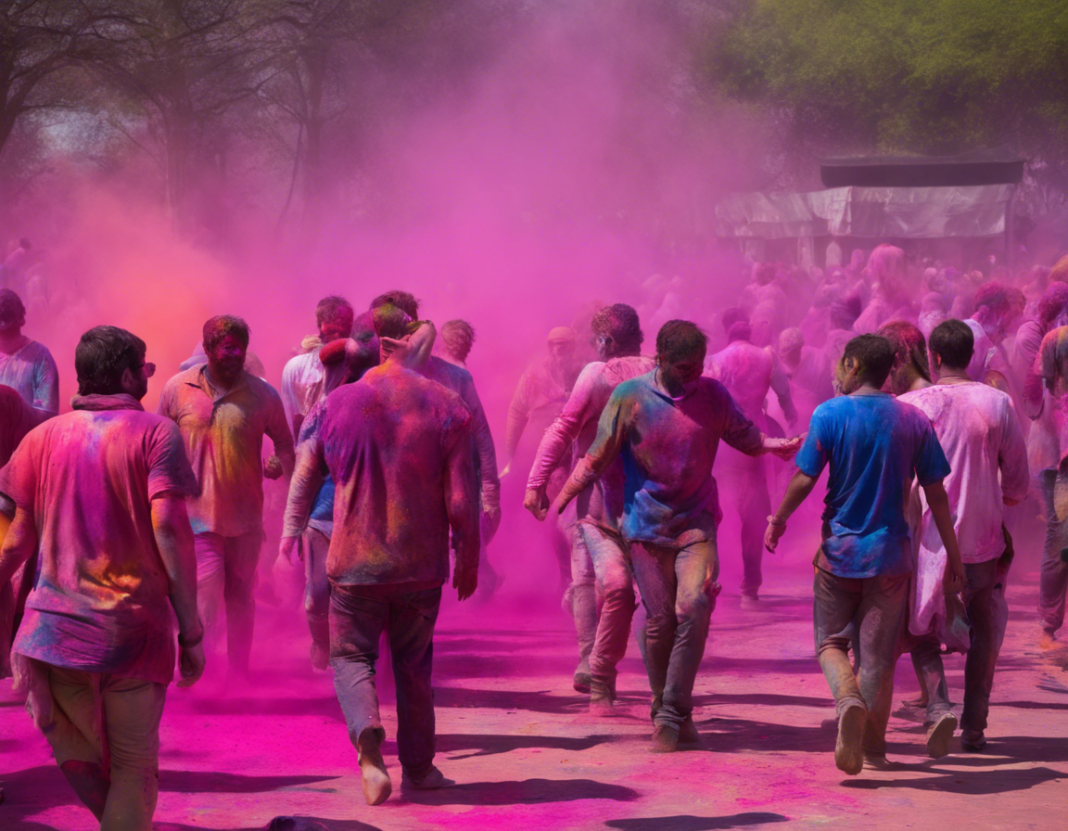Introduction
Holi is a vibrant and colorful festival celebrated predominantly in India and Nepal, but its popularity has spread to many other parts of the world. This ancient Hindu festival is also known as the Festival of Colors and the Festival of Love. Holi marks the arrival of spring, the end of winter, and is a time for people to come together, play with colors, and forgive and forget past grievances.
History and Significance
Holi has its roots in Hindu mythology and is associated with various legends. One of the most popular stories revolves around the demon king Hiranyakashipu and his son Prahlad. The festival symbolizes the victory of good over evil, as Prahlad, a devotee of Lord Vishnu, emerged unharmed from a fire set by Hiranyakashipu’s sister Holika.
Another legend linked to Holi is the Raas Leela of Lord Krishna, where he played pranks on the gopis by drenching them in colors. The playful and joyous spirit of Holi stems partly from these legends.
Preparations and Rituals
The festivities of Holi begin weeks before the actual day. People start gathering wood for the bonfire known as Holika Dahan, symbolizing the victory of good over evil. On the night before Holi, bonfires are lit, and prayers are offered to ward off evil spirits.
On the day of Holi, people gather in large groups and celebrate by smearing each other with brightly colored powders called gulal and colored water using balloons and water guns. There is also singing, dancing, and feasting with traditional Holi delicacies like gujiya, thandai, and puran poli.
Colors and Symbolism
The colors used during Holi have deep symbolic significance. Red symbolizes love and fertility, blue represents the divine and calmness, green is for new beginnings and harvest, yellow signifies piousness and knowledge, and pink represents friendship. The act of applying colors to each other is a way of promoting harmony and spreading happiness.
Safety Measures
While Holi is a joyous occasion, it is crucial to take certain safety precautions. It is advisable to use safe and organic colors to prevent skin allergies or other health issues. Protecting the eyes by wearing sunglasses and applying oil or moisturizer to the skin can make it easier to remove the colors later. Staying hydrated and being mindful of the water quality is also essential.
Celebrating Holi Around the World
In recent years, Holi has gained popularity beyond India and Nepal, with community events being organized in various parts of the world. Cities like New York, London, and Sydney host grand Holi celebrations, attracting people from diverse cultural backgrounds. These events often include music, dance, and of course, plenty of colored powder.
Environmental Impact
With the widespread use of synthetic colors and water balloons during Holi, there has been growing concern about its environmental impact. The chemicals present in these colors can pollute water bodies and harm aquatic life. To address this issue, many people are opting for eco-friendly colors made from natural ingredients like turmeric, beetroot, and flower extracts.
FAQs
- What is the significance of the bonfire lit on the eve of Holi?
-
The bonfire symbolizes the burning of evil forces and the triumph of good over evil.
-
How long does the Holi festival last?
-
The main day of celebration usually lasts for one day, but in some regions, it can extend to two days.
-
Is Holi only celebrated by Hindus?
-
While Holi has its roots in Hinduism, people from various faiths and cultures also participate in the festivities.
-
Are there any traditional Holi games played during the festival?
-
Yes, traditional games like breaking the pot (dahi handi) and tug-of-war (matki phod) are popular during Holi.
-
What is the significance of the colors used during Holi?
- Each color represents different emotions and aspects of life, promoting unity and positivity.
Conclusion
Holi is a celebration of joy, unity, and the arrival of spring. It is a time to let go of past grudges, embrace forgiveness, and spread love through colors. By understanding the history, significance, rituals, and safety measures associated with Holi, people can fully immerse themselves in this festive experience while being mindful of its environmental impact. Let the colors of Holi brighten your life and fill your heart with happiness and harmony.










